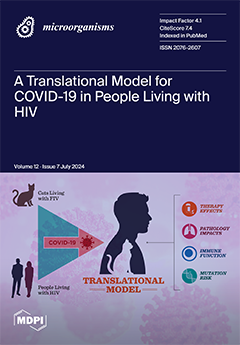Flower endophytic fungi play a major role in plant reproduction, stress resistance, and growth and development. However, little is known about how artificial cultivation affects the endophytic fungal community found in the tepals of rare horticultural plants. In this research, we used high-throughput
[...] Read more.
Flower endophytic fungi play a major role in plant reproduction, stress resistance, and growth and development. However, little is known about how artificial cultivation affects the endophytic fungal community found in the tepals of rare horticultural plants. In this research, we used high-throughput sequencing technology combined with bioinformatics analysis to reveal the endophytic fungal community of tepals in
Lirianthe delavayi and the effects of artificial cultivation on the community composition and function of these plants, using tepals of
L. delavayi from wild habitat, cultivated campus habitat, and cultivated field habitat as research objects. The results showed that the variety of endophytic fungi in the tepals of
L. delavayi was abundant, with a total of 907 Amplicon sequencing variants (ASVs) obtained from all the samples, which were further classified into 4 phyla, 23 classes, 51 orders, 97 families, 156 genera, and 214 species. We also found that artificial cultivation had a significant impact on the community composition of endophytic fungi. Although there was no significant difference at the phylum level, with
Ascomycota and
Basidiomycota being the main phyla, there were significant differences in dominant and unique genera. Artificial cultivation has led to the addition of new pathogenic fungal genera, such as
Phaeosphaeria,
Botryosphaeria, and
Paraconiothyrium, increasing the risk of disease in
L. delavayi. In addition, the abundance of the endophytic fungus
Rhodotorula, which is typical in plant reproductive organs, decreased. Artificial cultivation also altered the metabolic pathways of endophytic fungi, decreasing their ability to resist pests and diseases and reducing their ability to reproduce. A comparison of endophytic fungi in tepals and leaves revealed significant differences in community composition and changes in the endophytic diversity caused by artificial cultivation. To summarize, our results indicate that endophytic fungi in the tepals of
L. delavayi mainly consist of pathogenic and saprophytic fungi. Simultaneously, artificial cultivation introduces a great number of pathogenic fungi that alter the metabolic pathways associated with plant resistance to disease and pests, as well as reproduction, which can increase the risk of plant disease and reduce plant reproductive capacity. Our study provides an important reference for the conservation and breeding of rare horticultural plants.
Full article






